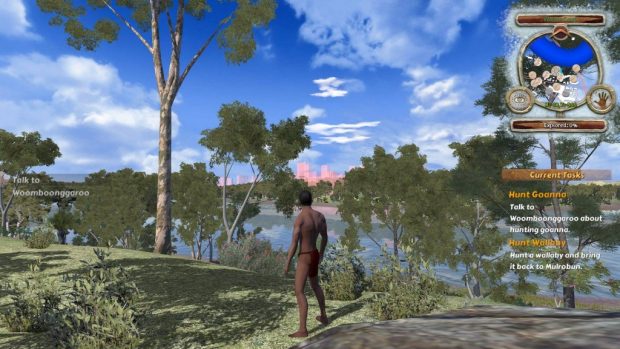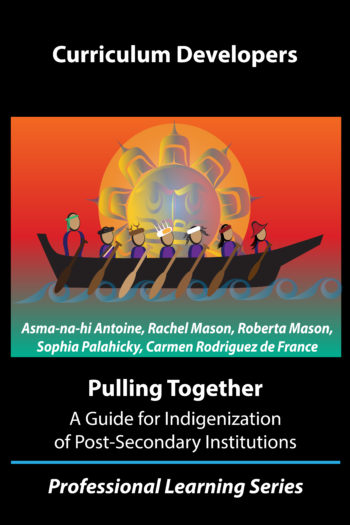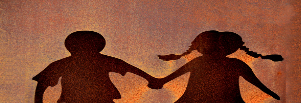“It’s about really immersing people in the culture. We want to gain better respect, understanding, knowledge about our mob. And I just think this medium is the best” (Leavy, B quoted in https://www.acmi.net.au/stories-and-ideas/preserving-indigenous-culture-through-vr-brett-leavys-virtual-songlines/”
Brett Leavy is an Indigenous software programmer and virtual historian descending from the Kooma people of Queensland, Australia. Leavy and his team (made up of non-Indigenous and Indigenous developers) have created two gaming platforms Virtual Songline and Virtual Warrane, which transport the gamer to an Australia before the arrival of European settlers. A topographical map of Queensland and Sydney Harbour is pinged with dots and locations of various Indigenous groups and once you choose a location, you are immediately walking along the Brisbane River as an “avatar of an Indigenous Australian and [you can] move that avatar through a virtual space that replicates the Australia of the past” (Edgar, 2018).
Leavy wanted to recreate the past, and calls himself a virtual time traveler. The gaming platform “allows viewers to walk on pristine land among Aboriginal people, discover their architecture, see the boats the men rowed and hunted from, watch women collect food, view the precise ochre patterns on dancers. Using archaeological, historical research, Leavy and his team recreate the past” (Edgar, 2018).
My final paper will be contending Howe’s (1998) dimensions of tribalism in regards to online spaces. He contends that there is no real long term shared history and no land in cyberspace. Leavy and his team literally recreate the land of the past and “strives to ensure [the] application represent First Nations people as the original inventors, knowledge keepers and innovators in sustainable land use so users can gain a greater understanding of our connection to our land & cultural heritage” (Leavy, Virtual Songline).
Below is a youtube clip of the game itself.
Further links and articles
- Fast five quick questions with virtual heritage Jedi, Brett Leavy
- ABC (Australian Broadcasting Corporation) – Virtual Songlines: using new technology to recreate a vanished past.
- Visit Songline: https://www.virtualsonglines.org/
- Audio interview: http://bneart.com/ima-talk-brett-leavy
References
Edgar, R. (2018, October 12). Virtual reality technology that really changes the game. The Sydney Morning Herald. https://www.smh.com.au/entertainment/art-and-design/virtual-reality-technology-that-really-changes-the-game-20181005-h16ab8.html



